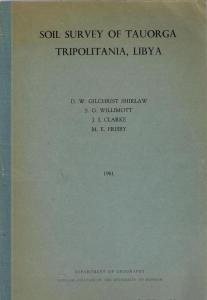In the late 1950s into the 1960s, the area of Durham, England became very involved in the development of the oil industry, including accompanying types of research, in Libya. The University of Durham’s geography department hosted a major geographic research project on Libya, and the county of Durham was involved in the construction of one of the earliest oil pipelines in Libya (the very first shipment of Libyan crude oil in 1961 actually went to a British refinery). This activity, funded by various parties interested in the exploration and mapping of Libya, produced over a dozen MA and PhD dissertations on various aspects of Libyan geography in the 1960s, as well as other publications. In fact, Durham’s Geography department hosted what may have been the very first crop of Libyan PhD students in a Western university.
The Department of Geography also published a handful of studies on Libya stemming from the same period of research activity, including much fieldwork on-site in Libya. (Click the links below for PDFs)




R.W. Hill, A Bibliography of Libya (Department of Geography, Research Papers Series No. 1, 1959). Durham.
S.G. Willimott & J.I. Clarke (eds.). Field Studies in Libya (Department of Geography, Research Papers Series No. 4, 1960). Durham.
D.W. Gilchrist Shirlaw, S.G. Willimott, J.I Clarke, M.E. Frisby. Soil Survey of Tauorga Tripolitania, Libya (Department of Geography, 1961). Durham
G.H. Blake. Misurata: A Market Town in Tripolitania (Department of Geography, Research Papers Series No. 9, 1968). Durham.

